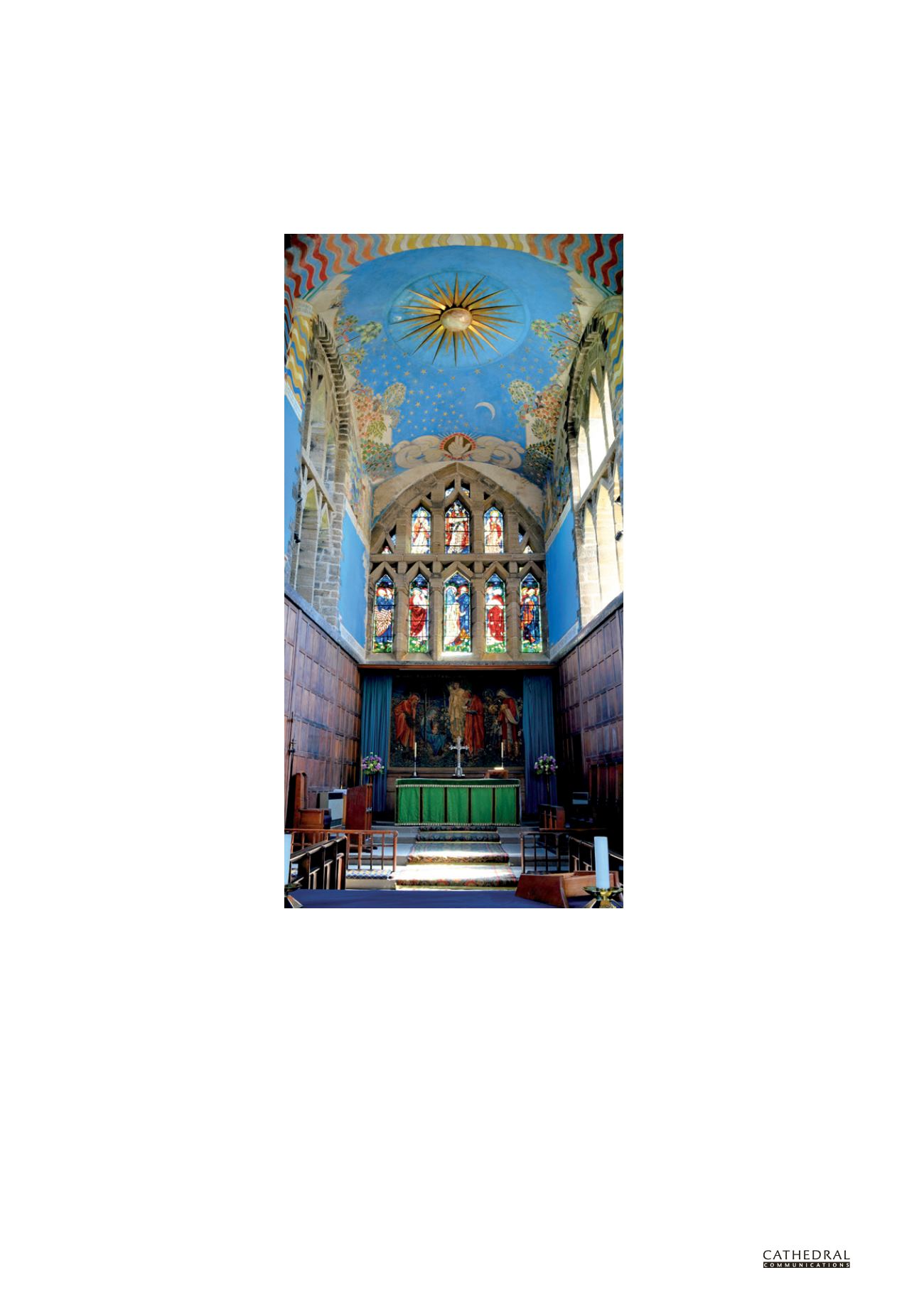

48
BCD SPECIAL REPORT ON
HISTORIC CHURCHES
24
TH ANNUAL EDITION
HLF GRANTS UPDATE
T
HE LARGEST source
of funding for the UK’s
historic places of worship
is closing. The Heritage Lottery
Fund (HLF) currently distributes
£30 million to listed places of
worship in the UK each year
through its Grants for Places
of Worship (GPOW) scheme.
Those grant offers already made
under the scheme will not be
affected, and there will be a final
round of applications for places
of worship in England, Wales
and Northern Ireland in August
2017. The scheme is likely to be
continued in Scotland where
it is administered jointly with
Historic Environment Scotland.
The GPOW scheme offers
grants of £10,000–£250,000 for
urgent structural repairs and
for improvements such as the
provision of toilets and access
ramps. While it is the only HLF
scheme dedicated to the needs
of places of worship, two other
HLF grant schemes are available
for general heritage projects:
Our Heritage (for grants of
£10,000–£100,000) and Heritage
Grants (up to £5 million). Both
can be used for the conservation
and repair of a wide range
of heritage assets, including
places of worship whether or
not they are listed. The HLF
believes that congregations
will find these schemes useful
for a wider range of purposes,
allowing them to carry out
projects which make places of
worship more sustainable.
A proportion of the
money available under the two
general heritage schemes will
be ring-fenced this year for projects
which would have been funded under
the GPOW. However, there is no
guarantee that funding will be ring-
fenced beyond this, and it is likely that
places of worship will have to compete
for grant aid with all other aspects of
our heritage in the future. Competition
for HLF grants is already intense, and
recently there has been a decline in
lottery ticket sales, reducing the funding
available next year by about a third.
The closure of the GPOW has
drawn criticism from across the
sector, and highlights the need for an
alternative mechanism for supporting
the conservation of historic places of
worship in the long term. Almost half of
all Grade I listed buildings in England
are places of worship, and many of them
are managed by small congregations. It
makes sense to ring-fence funds for such
an important sector and to target
grants in a manner which best
suits the unique requirements
and limited resources of the
recipients. The dominant concern
for congregations is funding for
occasional major repairs, and the
GPOW is generally considered to
satisfy this need more effectively
than the two general heritage
schemes will. In particular, the
GPOW provides a two-stage
process with expert assistance,
which means that congregations
are supported in the upfront costs
of developing their project. In
contrast, the Our Heritage scheme
is relatively simple but it does not
currently provide such assistance,
while the requirements of the
Heritage Grant scheme have a
reputation for being particularly
onerous and needing specialist
expertise, which can be expensive.
The Church of England’s
ChurchCare website points
out that the poorer and less
well-resourced churches will
be disproportionately affected
by the loss of the GPOW as
they are already struggling to
access the funding required to
develop proposals. Parishes
in rural areas and inner cities
may be worst affected as they
often have both the smallest
congregations and the most
complex requirements. Given the
competition for heritage funding
and without public funds ring-
fenced to support congregations
in carrying out major repairs,
the concern is that many
necessary but expensive repairs
will simply not be carried out.
Further Information
The Heritage Lottery Fund website – in
particular, see ‘A new approach to
supporting places of worship’, www.hlf.
org.uk/about-us/news-features/new-approach-supporting-places-worship
The Historic Religious Buildings Alliance
website – for the latest information and
links to other sources of information, see
www.hrballiance.org.uk/consultations-2/hlf-closure-of-gpow
The windows, nave and transept of St Andrew’s, Roker, Sunderland
(1907) were restored with the aid of a grant of £140,000 under the GPOW
scheme. Grade I listed, it is often referred to as the Cathedral of the
Arts and Crafts Movement, attracting visitors from across the country.
The support of a dedicated grant source is essential for small parishes to
keep treasures like this open and in good repair.


















